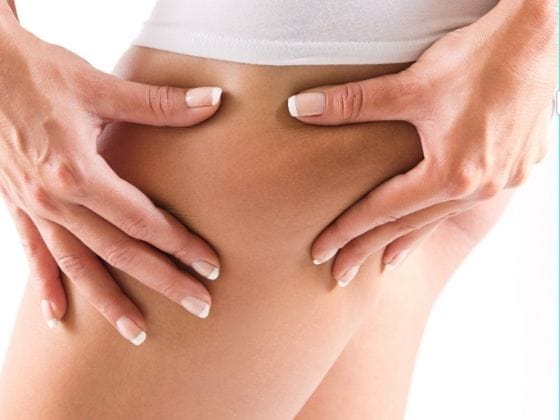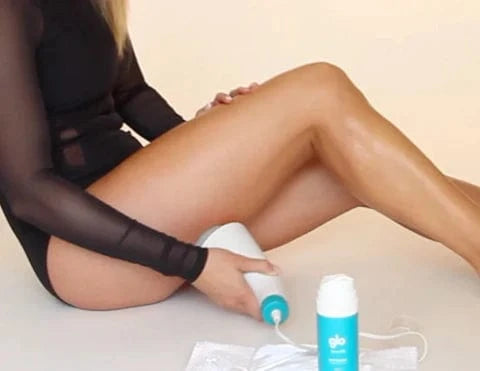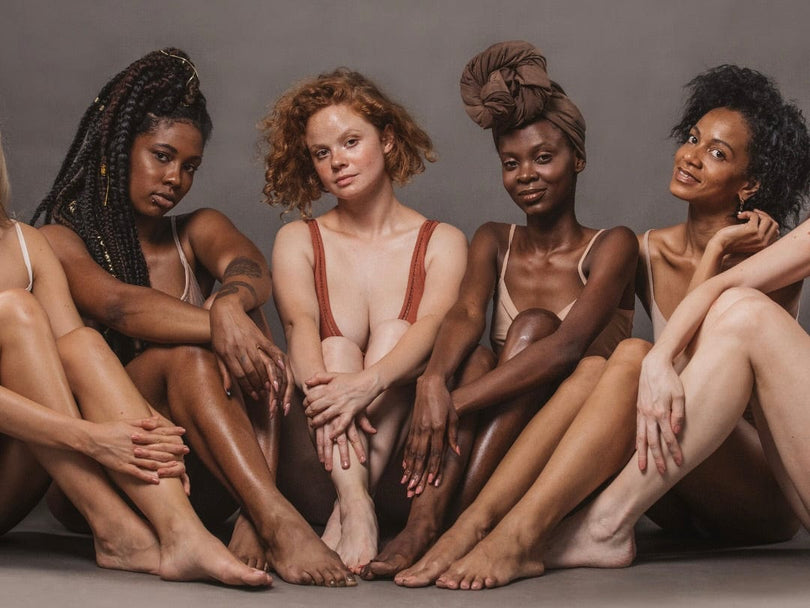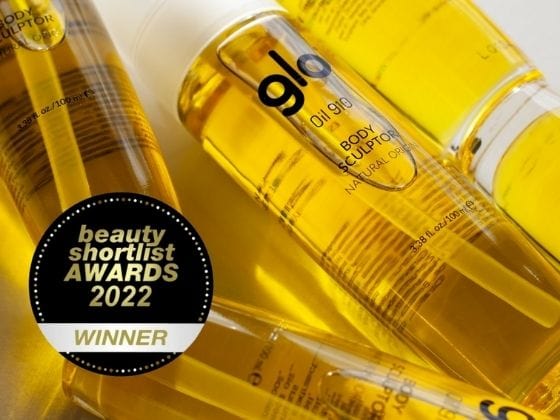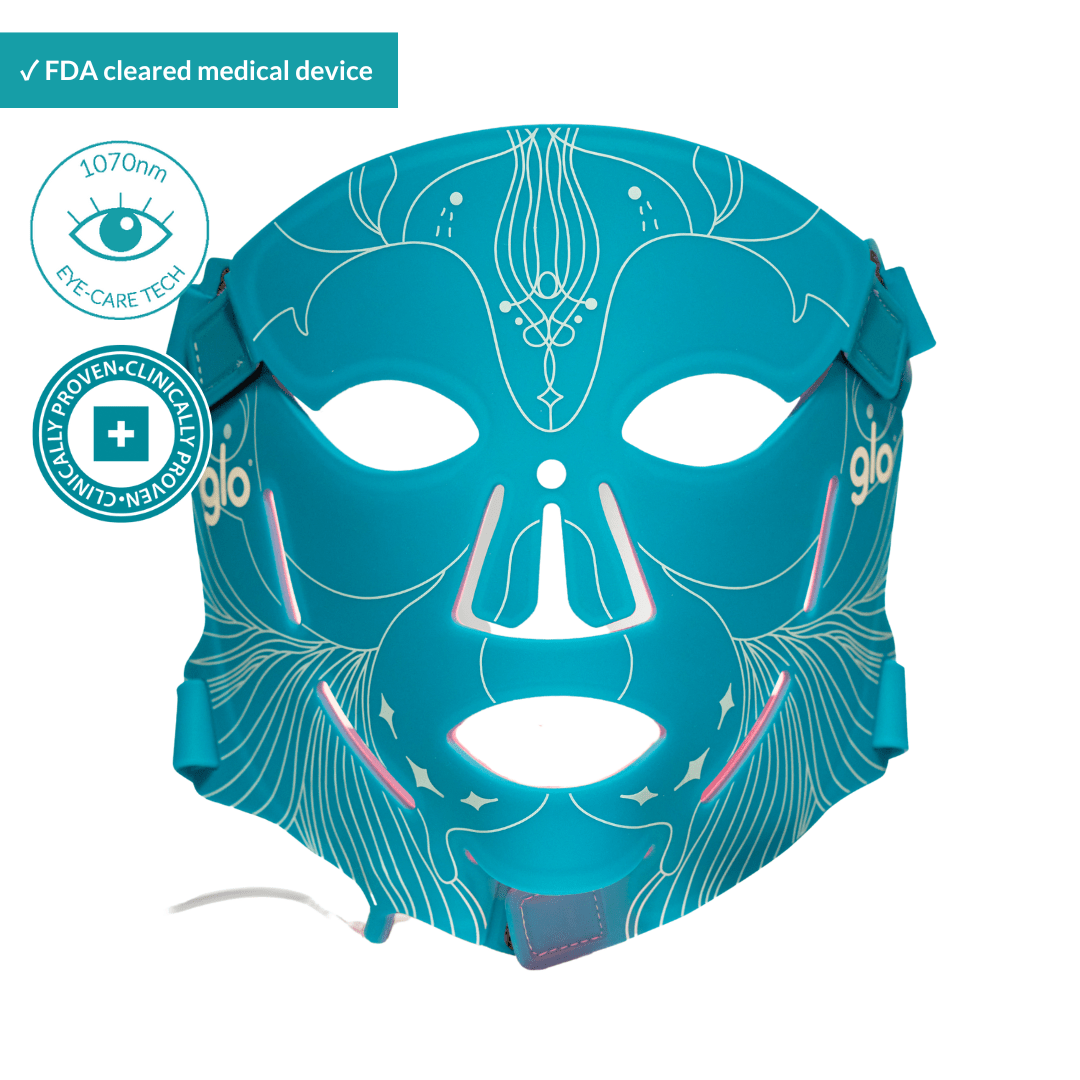
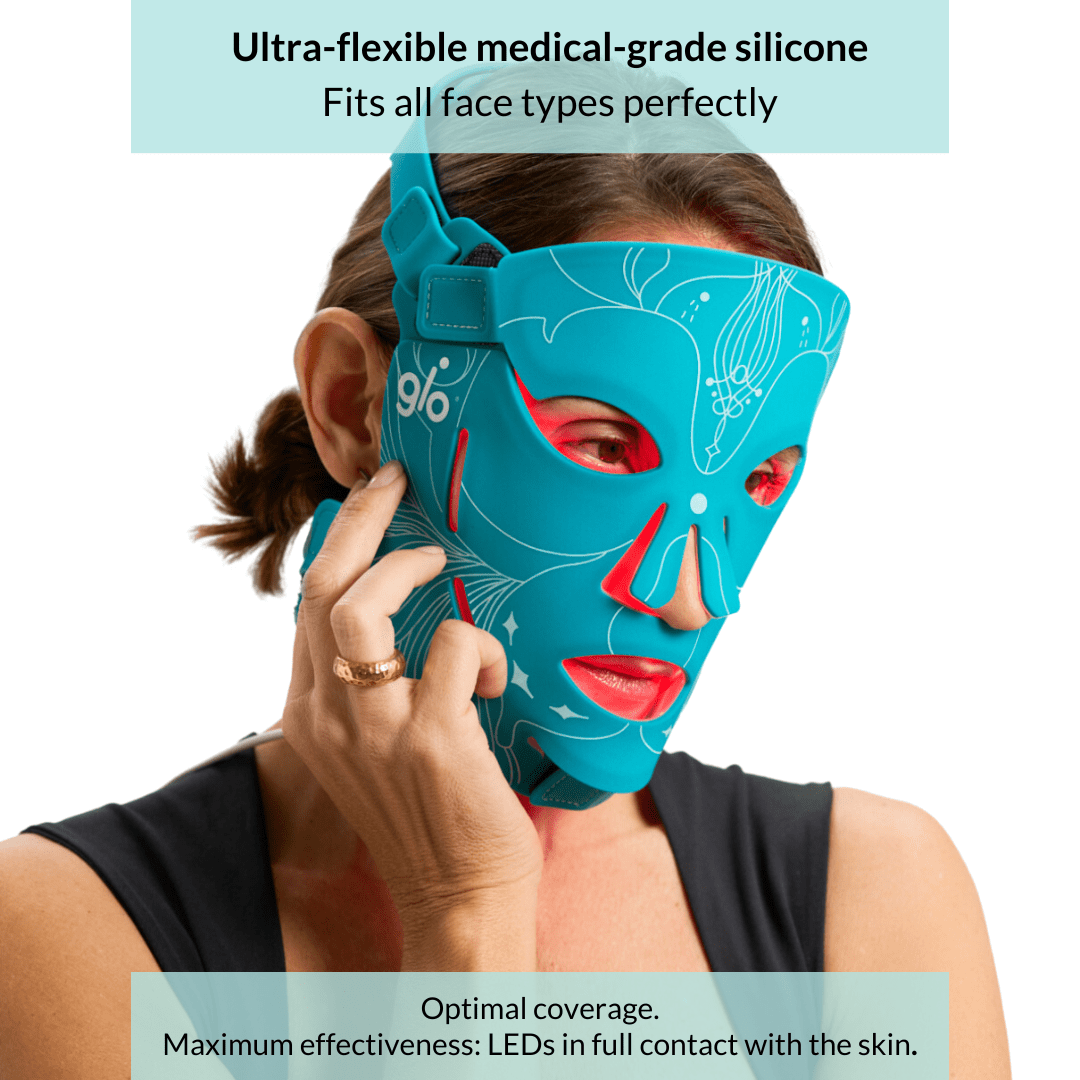
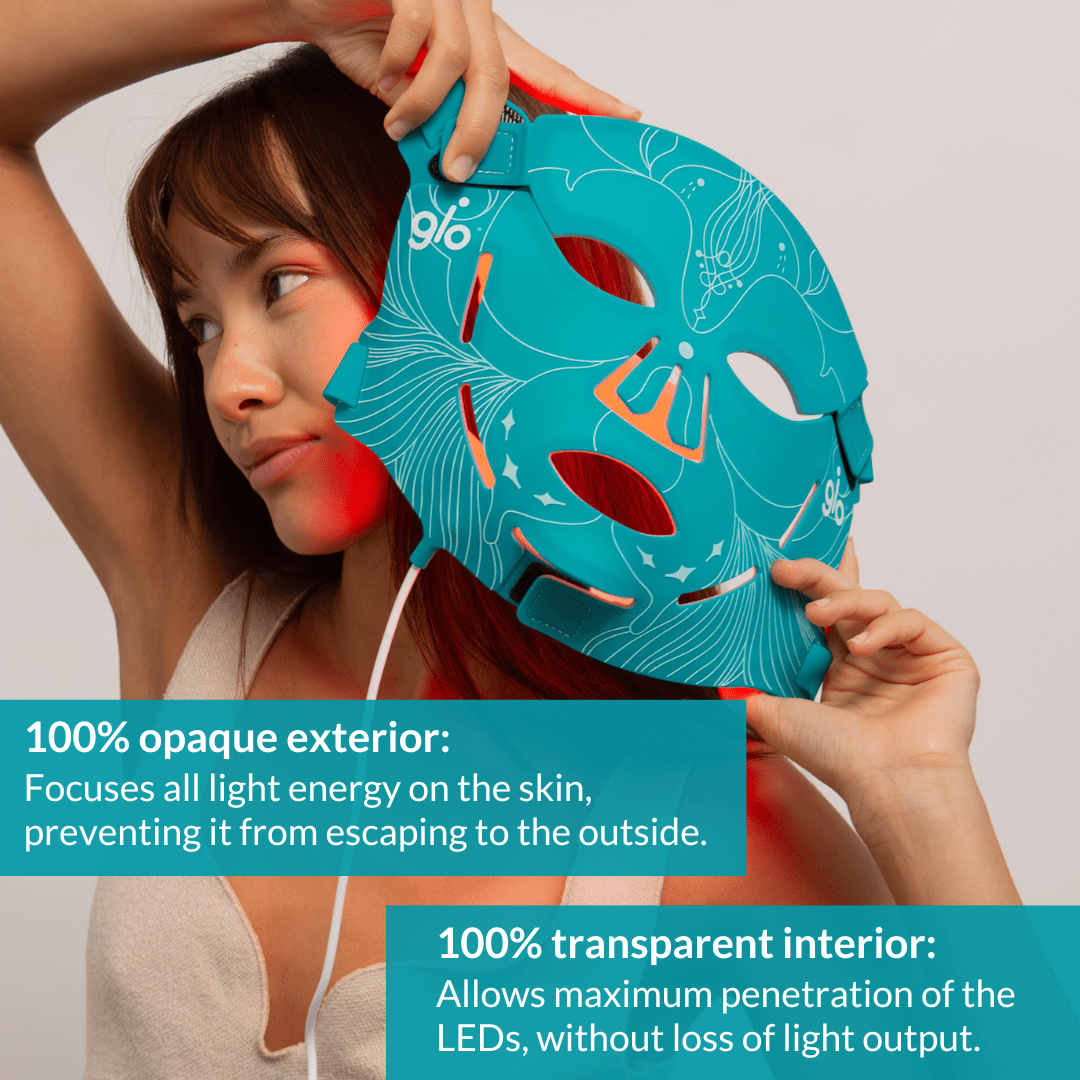
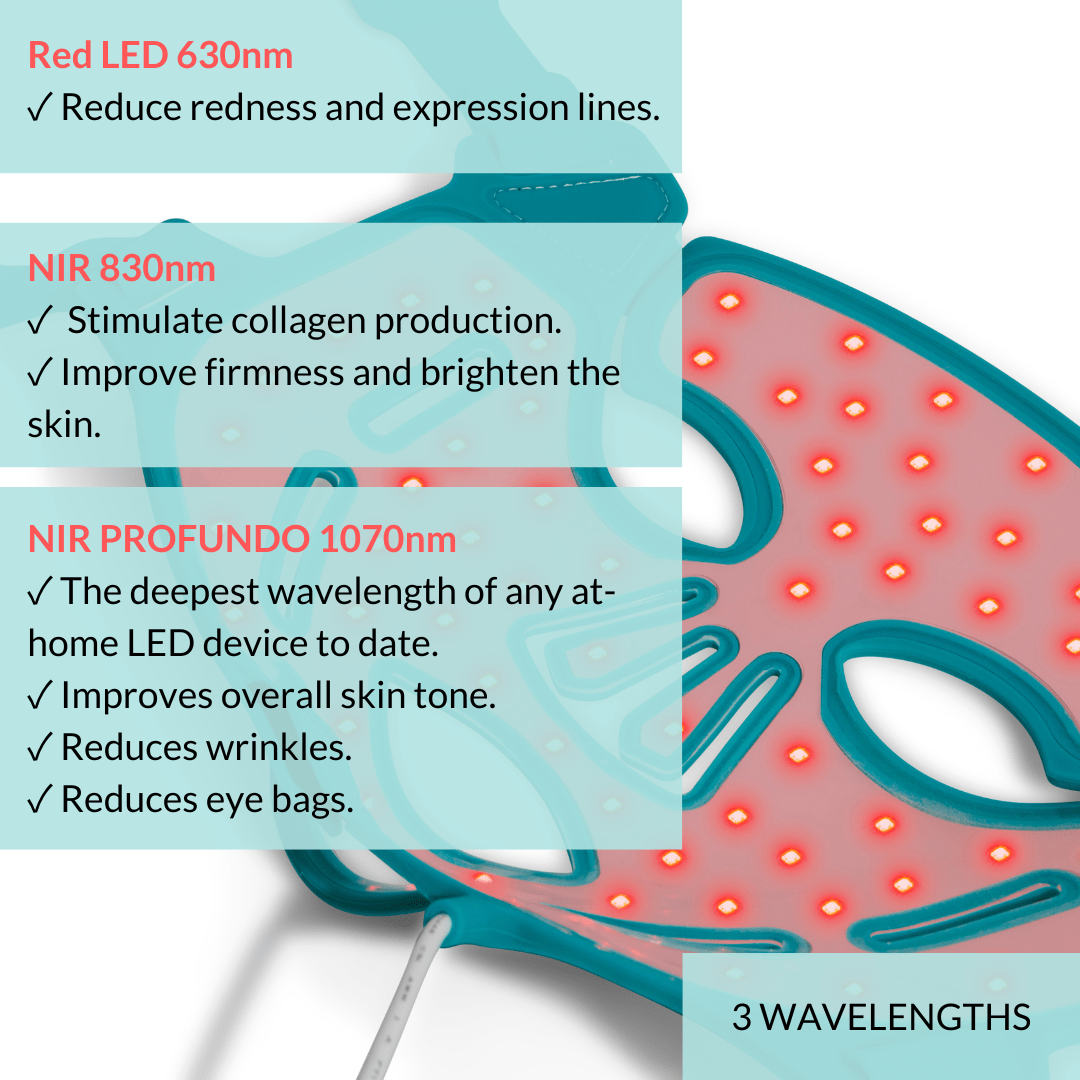
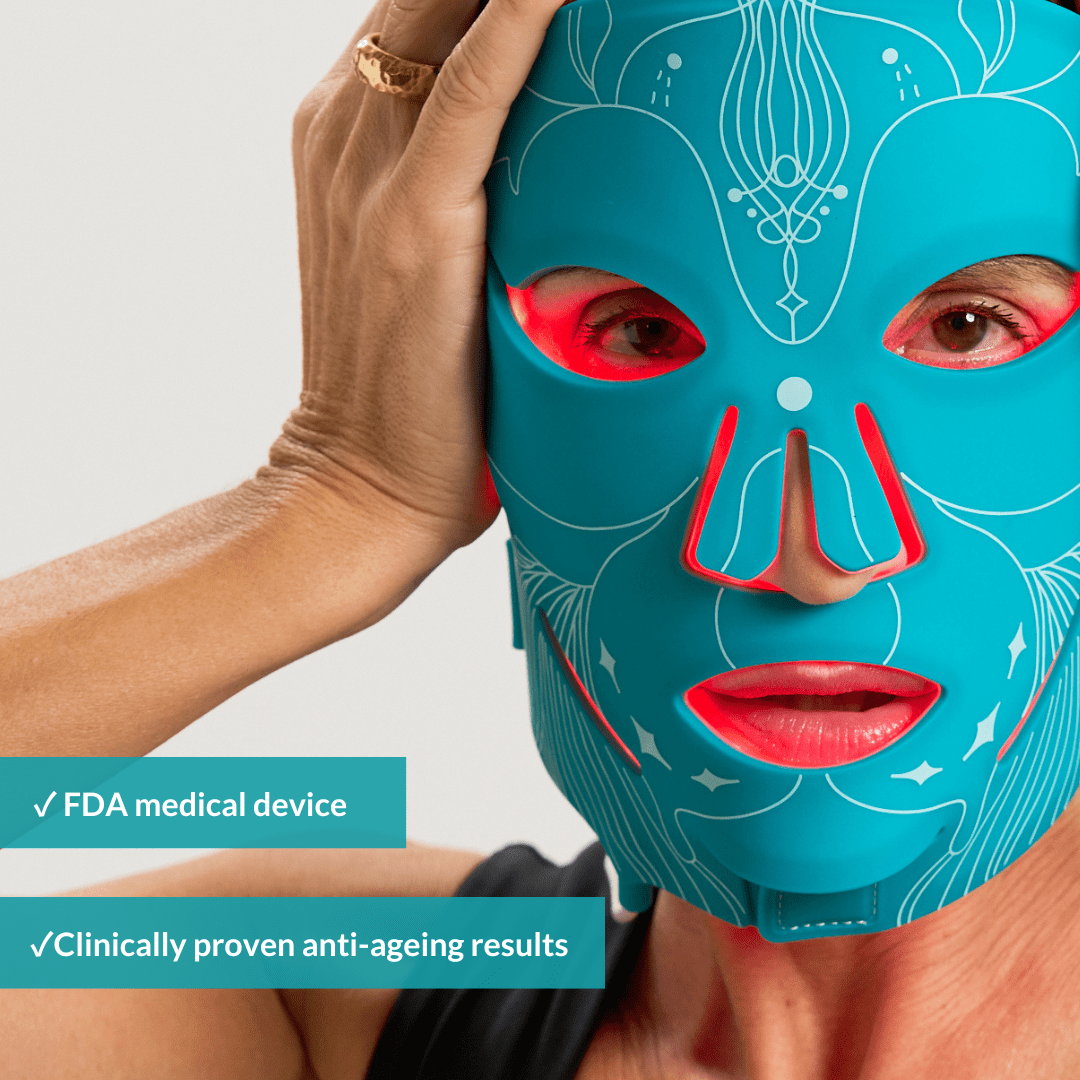
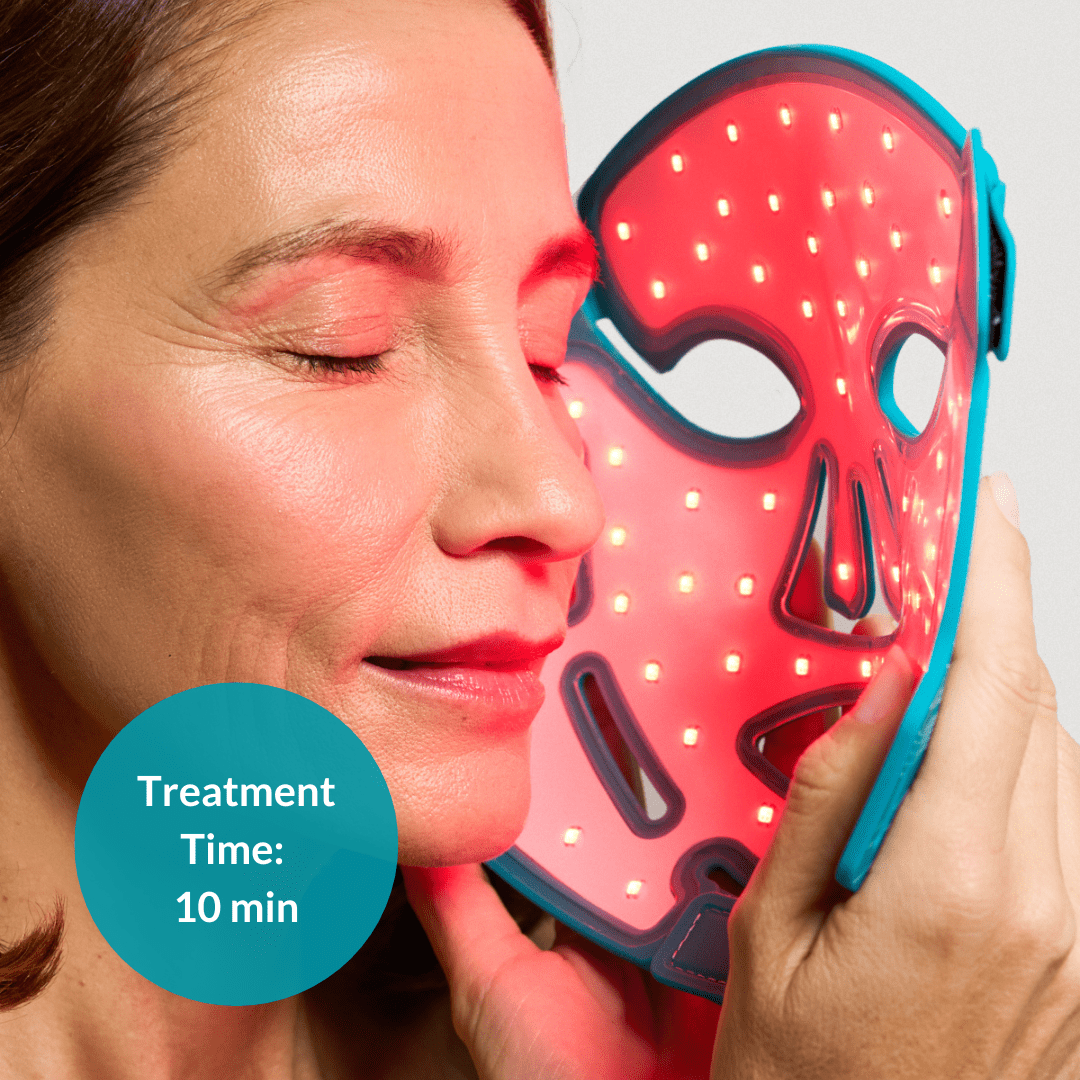
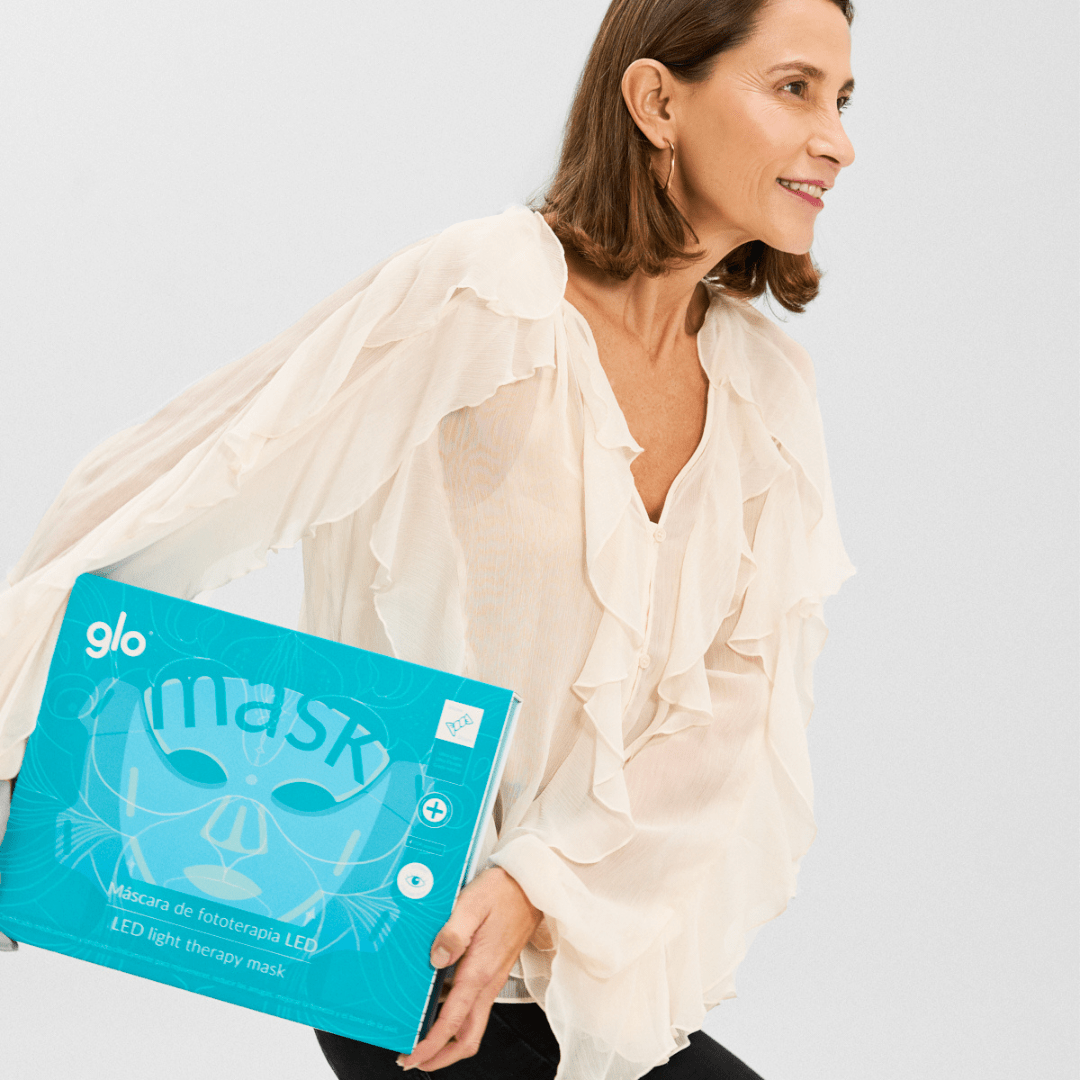
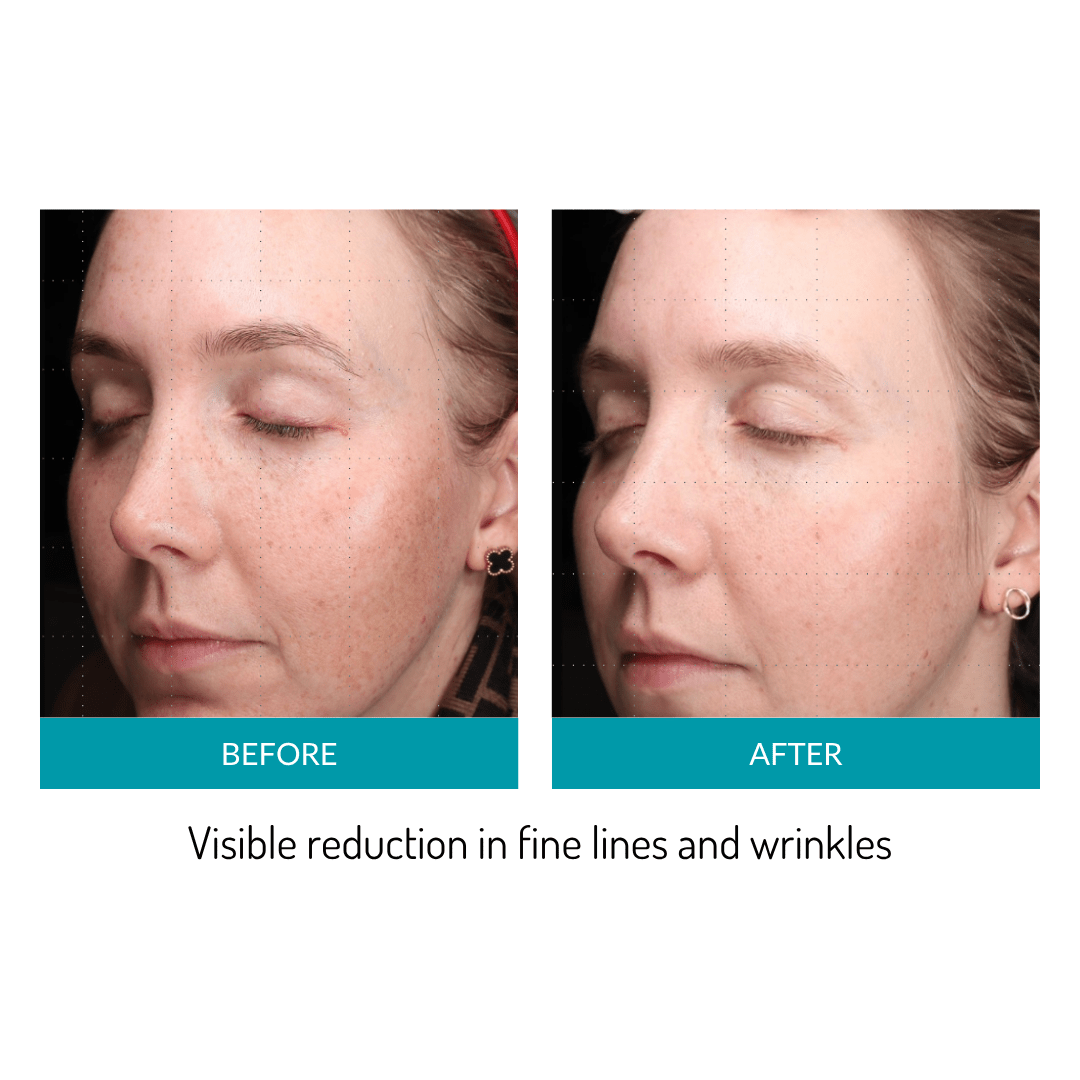
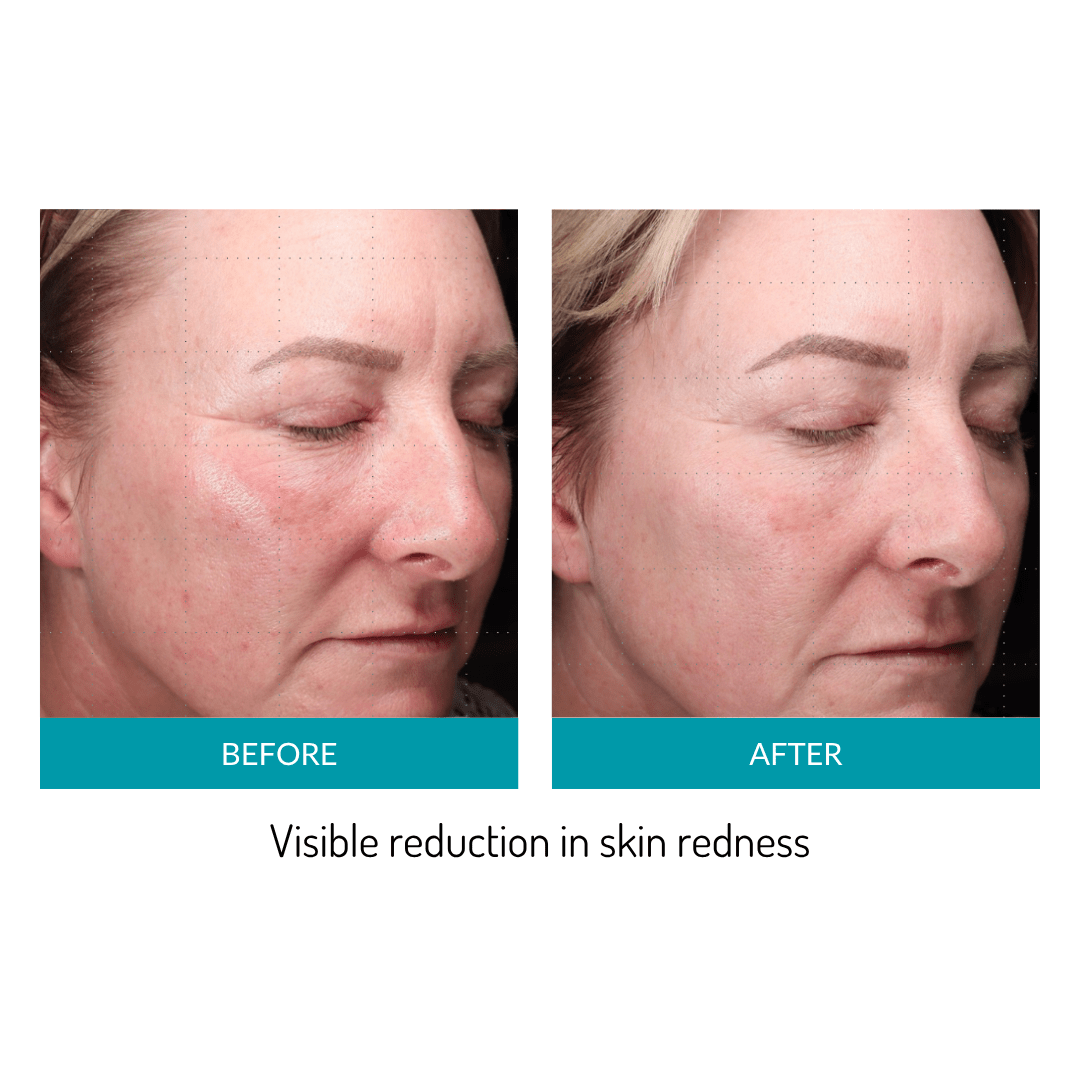
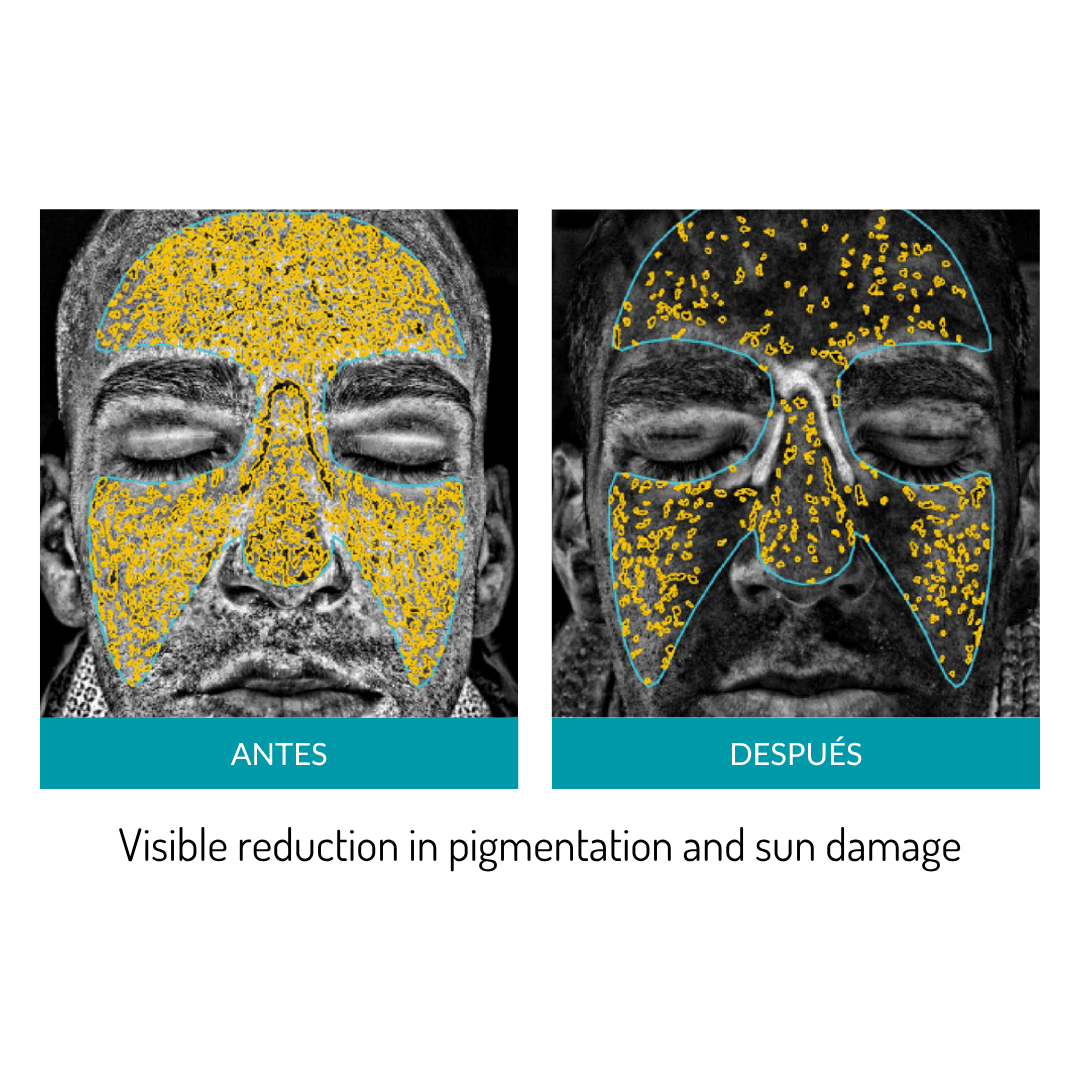
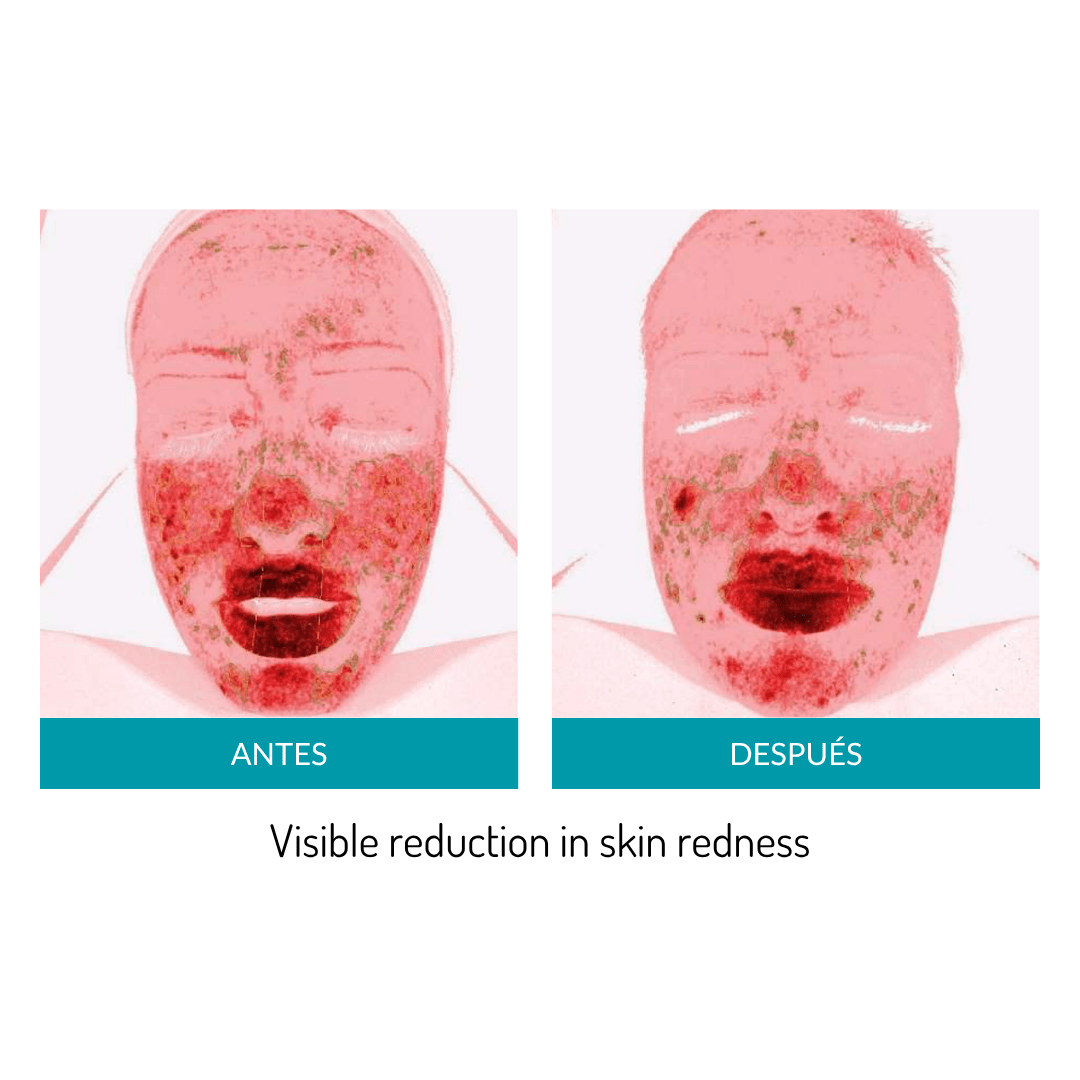
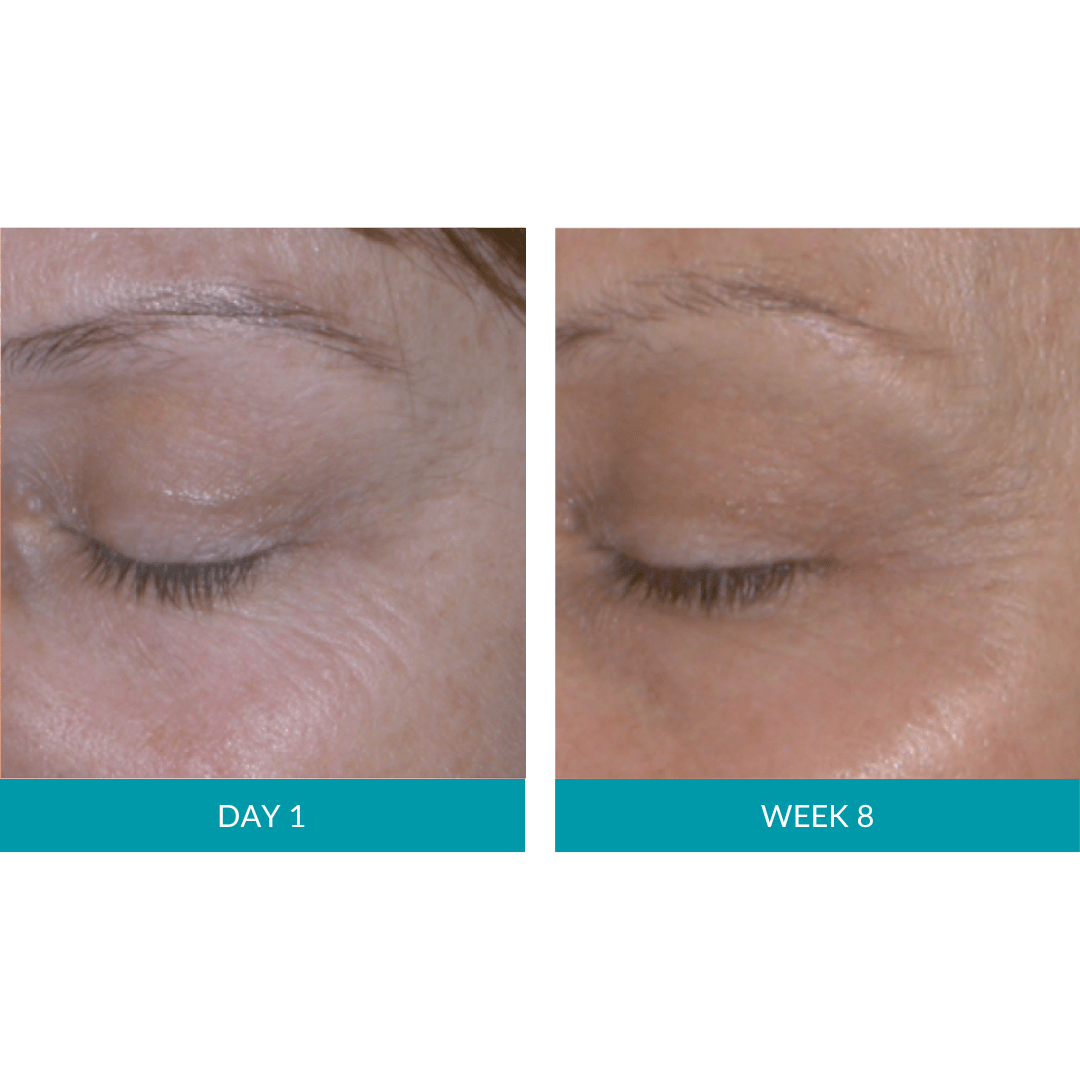
Glo Mask Anti-Aging LED Phototherapy Mask
With Glo Mask, in just 10 minutes, 5 times a week, you'll achieve radiant, hydrated, and rejuvenated skin, all from the comfort of your own home. Glo Mask combines the clinically proven wavelengths of 630 nm and 830 nm with the added benefits of the innovative 1070 nm.
✅FDA-approved medical device.
Free shipping
3-year warranty
Shipping in 24-72h
Save with exclusive packs
Pay in installments with PayPal
Real clinical study results
Usage: 5 days a week. 8 weeks.
132 medical-grade LEDs.
3 wavelengths.
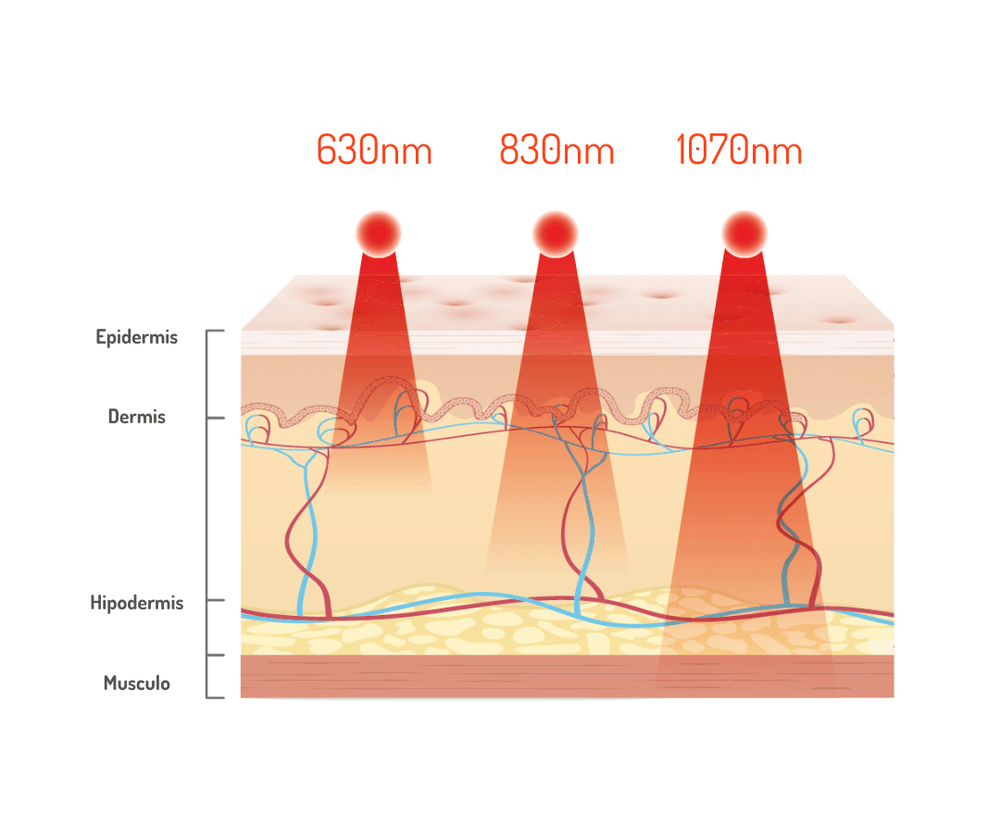
Repairs skin by reducing redness and expression lines, improving skin texture.
Stimulates skin-regenerating cells, improving deep collagen renewal and skin oxygenation. Its action improves skin firmness, luminosity, and hydration.
1070 nm is clinically proven as the deepest wavelength of home-use LED devices to date. It has been shown to improve overall skin tone, smooth texture, and reduce eye bags and wrinkles.
1070nm EYE-CARE TECH
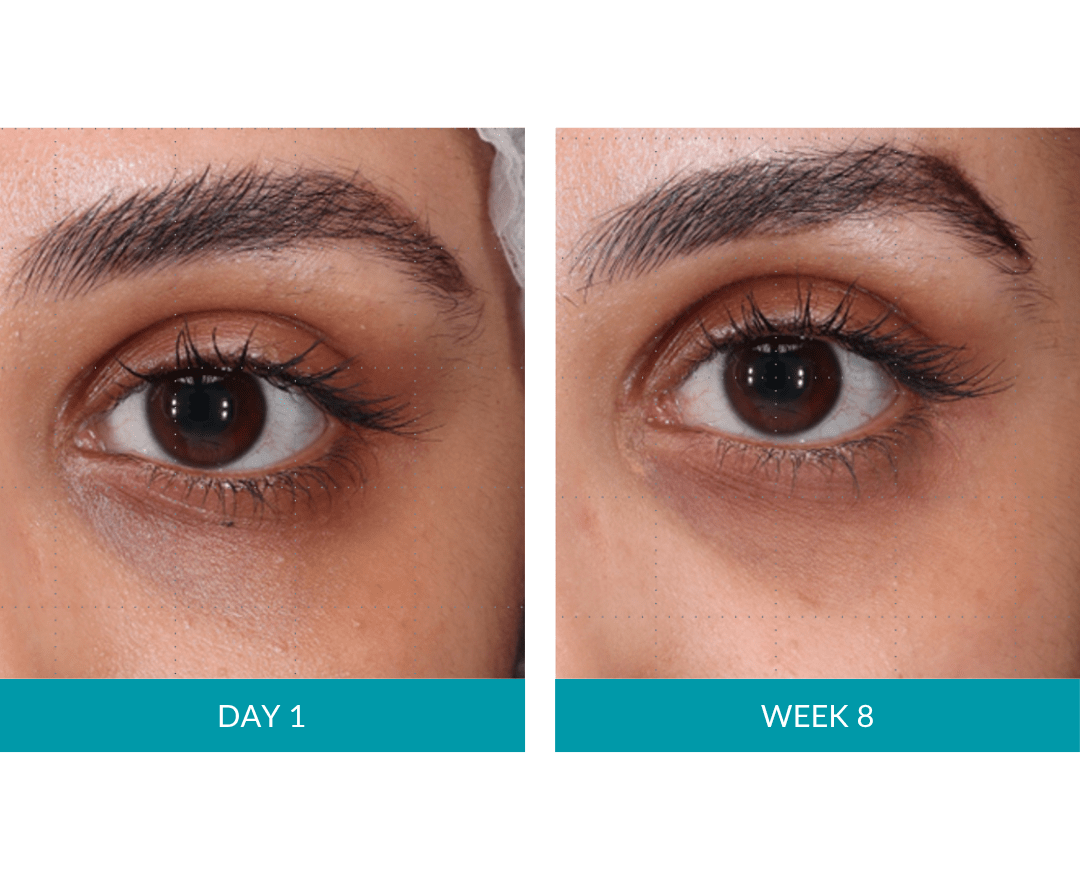
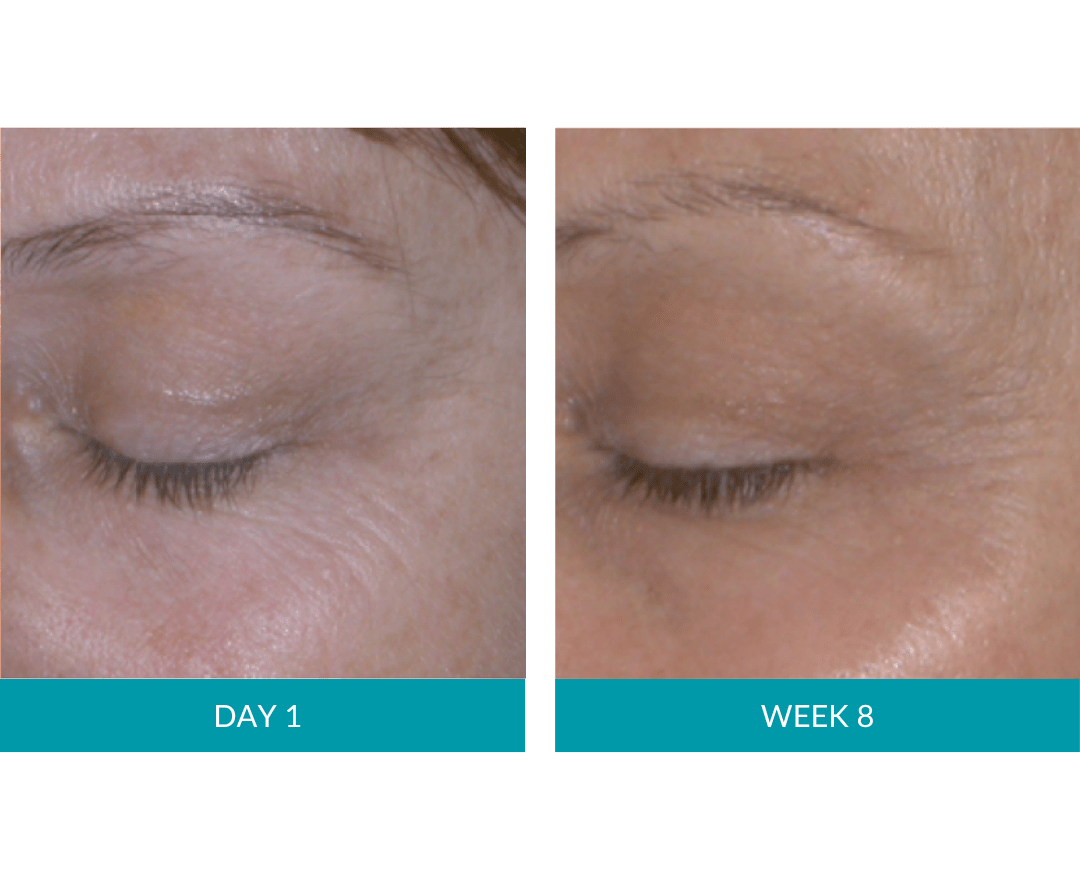
46% notice improvement in eye bags.
57% improve wrinkle reduction.
Recommended by industry experts
What does an FDA medical device mean?
- Traceability: Each mask is completely traceable and has been tested with the same rigor as a medical device.
- Eye safety: Certified under IEC 62471, ensuring its safety for the eyes.
- Advanced technology: Flexible silicone and biocompatible materials built according to medical device regulations.
- Clinically proven wavelengths:
- Red LED (630nm): Stimulates collagen production and reduces fine lines.
- NIR (830nm): Improves circulation and tissue oxygenation.
- NIR (1070nm): Promotes cellular repair and rejuvenates the skin.
- Proven efficacy: Proven doses (30mW/cm²) and usage recommendation (3-5 days per week).
Frequently Asked Questions
What is the Glo Mask facial mask?
Glo Mask is a flexible home-use mask that uses light-emitting diodes (LED) to bathe the skin in light. Glo Mask combines the clinically proven and reliable wavelengths of 630 nm and 830 nm with the added benefits of 1070 nm, which is also clinically proven to improve overall skin complexion.
How does the Glo Mask treatment work?
Glo Mask uses proven light wavelengths: red light at 630 nm and near-infrared light at 830 nm and 1070 nm. Studies have shown that these wavelengths stimulate collagen and elastin production and help improve blood flow and tissue oxygenation through a process called
photobiomodulation. These effects help skin cells absorb topical skincare products more effectively and reverse the effects of the aging process. Glo Mask is designed so that light reaches the skin directly, ensuring that the maximum amount of light reaches its cellular targets and is not wasted.
What do the different wavelengths do?
1070 nm is the deepest penetrating wavelength used to date in LED devices. The light penetrates deeply into the dermis and has a powerful healing effect on cells by creating a strong anti-inflammatory response. It has been shown to improve overall skin complexion, reduce under-eye bags and swelling, and smooth texture and tone.
630 nm repairs the skin by boosting collagen production and reducing redness. It leaves the skin firm, luminous and hydrated.
830 nm stimulates the skin's 'healing' cells. By penetrating deeply into the skin surface, it stimulates circulation, improves blood flow and increases oxygen reaching skin cells, helping the skin look fresh and hydrated.
Is it safe?
Glo Mask has undergone safety tests and complies with international safety standards. As the mask does not cover the eyes, eye protection is not necessary.
Is the Glo Mask treatment painful?
You should not feel any pain during Glo Mask use. The light penetrates the skin and stimulates cells to act naturally. Glo Mask is non-invasive and no heat generated by the mask is perceived, so the treatment is completely painless.
Who is Glo Mask suitable for?
DO NOT use Glo Mask if you are taking any medication that may cause photosensitivity, have any photosensitivity disorder, are pregnant or breastfeeding. Photosensitivity (light sensitization) is a common side effect of several medications and some herbal remedies. You can find a list of medications HERE.
Since Glo Mask does not generate perceptible heat, it is suitable for most people; however, anyone considering Glo Mask treatment should first check the contraindications list.
If you are unsure, consult your doctor.
What results can I expect?
1. Fine lines and wrinkles
At 8 and 12 weeks, subjects' crow's feet wrinkles had improved by 31% and 51% compared to baseline values (VISIA).
2. Skin texture improvement
After 1 treatment per week for 4 weeks, up to 41% improvement in skin texture and smoothness can be observed, showing increased hydration and cellular renewal, and after 3 treatments per week for 4 weeks, 95% showed improvement in skin texture, firmness and tone.
3. Increased blood flow
After 3 weekly treatments for 4 weeks, 95% of users confirmed that their skin looked more luminous and plump.
After a single treatment, 56% of subjects perceived that their skin had brightened.
After a single treatment, 50% of subjects perceived that their skin was less dull.
After a single treatment, 69% of respondents perceived that their skin was firmer.
After a single treatment, 47% of respondents perceived that their skin redness had improved.
How often should I use Glo Mask?
For best results, we recommend performing the treatment 3 to 5 days a week for a minimum of 6 weeks.
After the 6 weeks, we recommend using it regularly according to your skin's needs to maintain healthy and luminous skin.
Can I use Glo Mask with my skincare products?
Before using Glo Mask, you should remove makeup, creams, lotions and other skincare products.
Trials have shown that Glo Mask significantly improves skin parameters such as hydration, texture and pigmentation. Glo Mask improves tissue oxygenation and blood flow and therefore skincare absorption will improve considerably.
Glo Mask is compatible with most normal skincare routines.
What is the advantage of Glo Mask?
1. Glo Mask uses clinically proven technology and proven light wavelengths.
2. Patented flexible technology.
3. Soft and comfortable silicone that adapts to your face. Completely portable: take Glo Mask anywhere.
4. Designed and manufactured according to international medical standards, with medical-grade components.
Can I combine Glo Mask with other aesthetic treatments?
Yes, Glo Mask can be combined with more invasive treatments such as Botox, peels, injectables and laser rejuvenation. Glo Mask's anti-inflammatory properties can help in the healing process and reduce bruising and swelling.
Can I use serums or gels under Glo Mask treatments?
No, we do not recommend it. Some serums, oils and creams can block the passage of light. We recommend a clean face, without makeup or skincare products.
Can Glo Mask relieve skin redness?
Yes. The Glo Mask helps reduce inflammation and calm skin redness.
Why doesn't Glo Mask use blue light?
Blue light is normally used in the treatment of mild to moderate acne. Glo Mask's goal is skin rejuvenation and treatment of fine lines and wrinkles.
Can it help with spots or imperfections?
Yes. Although the Glo Mask does not use blue light, normally associated with acne treatment, people who use it to treat hormonal breakouts, spots and imperfections have observed improvements. Red and infrared light have an anti-inflammatory response on the skin that can help calm redness and swelling around spots. It can also help with skin scars when used over a long period of time.
My Glo Mask is plugged in but still not working?
Glo Mask cannot be used while charging (plugged in). When the Glo Mask is fully charged, unplug it from the power supply and press the power button on the remote. If it still doesn't work, the mask may be faulty and you may need to contact the store where you bought it.
What are the wavelengths and joules emitted?
Glo Mask uses red and near-infrared wavelengths:
Red: 630 nm ± 10 nm
NIR: 830 nm ± 10 nm
NIR: 1070 nm ± 20 nm
Glo Mask emits 18 joules/cm2.
What power source does the mask use?
Glo Mask uses a 9.62 Wh/2200 mAH lithium-ion battery.
If traveling by plane, the battery must be carried in hand luggage and not checked in. The device must be completely turned off.
What does it mean that we have conducted clinical trials?
It means we have conducted clinical trials to test these specific wavelengths and the power of the energy emitted. Glo Mask is the result of more than 20 years of experience in LED research. Manufactured by the people who first discovered that red and infrared together provide the best treatment for wrinkles, and who constantly conduct clinical trials to demonstrate the efficacy of the devices. Responsible LED companies should have their OWN proven data on their product.
Why can't I use Glo Mask during pregnancy?
None of our clinical trials have been conducted on pregnant women, so we have not studied any effects that LED treatment may have on the baby. Although we have never heard of adverse effects of LED in pregnancy, we cannot be sure.
What is the duration of the Glo Mask warranty?
It is 3 years in Spain, and 2 years in the rest of Europe. The battery warranty is 1 year, to extend it to 2 years, register your device here.
How long does Glo Mask last?
The LED diodes themselves can last between 5 and 10 years, but we cannot determine the lifespan of the other elements, as it is often determined by the care given to the product. We offer a warranty (3 years in Spain, 2 years in the rest of Europe) that covers all areas of the mask, including the LEDs, during that period.
Can I pay in installments?
Yes, with Klarna you can split your payment into 3 installments without interest. It's fast, secure and commission-free. (Read more) and there we put the link https://www.klarna.com/es/atencion-al-cliente/
Do you have any questions that haven't been answered here?
Contact us via email support@glo910.es and someone will get in touch with you. We pride ourselves on total transparency and honesty with all our customers.
How to use
Before your first treatment, you should perform a photosensitivity test. See the instructions in the User Manual.
- Make sure the battery is sufficiently charged.
- Clean the skin (you can also exfoliate it) to remove the remains of the usual treatments.
- The mask is completely safe for the eyes, but you can use the eye protection included in the set if you wish.
- Place the Glo Mask on your face and secure it with the Velcro straps (longer straps are placed at the top of the mask, shorter straps at the bottom).
- Adjust the chin and forehead sections of the mask for a snug fit. This will fit the mask to the shape of your face.
- Connect the Glo Mask to the controller and turn it on. The device switches off after ten minutes of treatment. You can also stop the treatment at any time by pressing the ON/OFF button on the controller.
- Remove the Glo Mask and apply your usual treatment.
- Clean the mask with a water-based wipe.
- Make sure the device is NOT charging during cleansing.
- Repeat the treatment 3-5 times per week for a minimum of 6 weeks.
Specifications
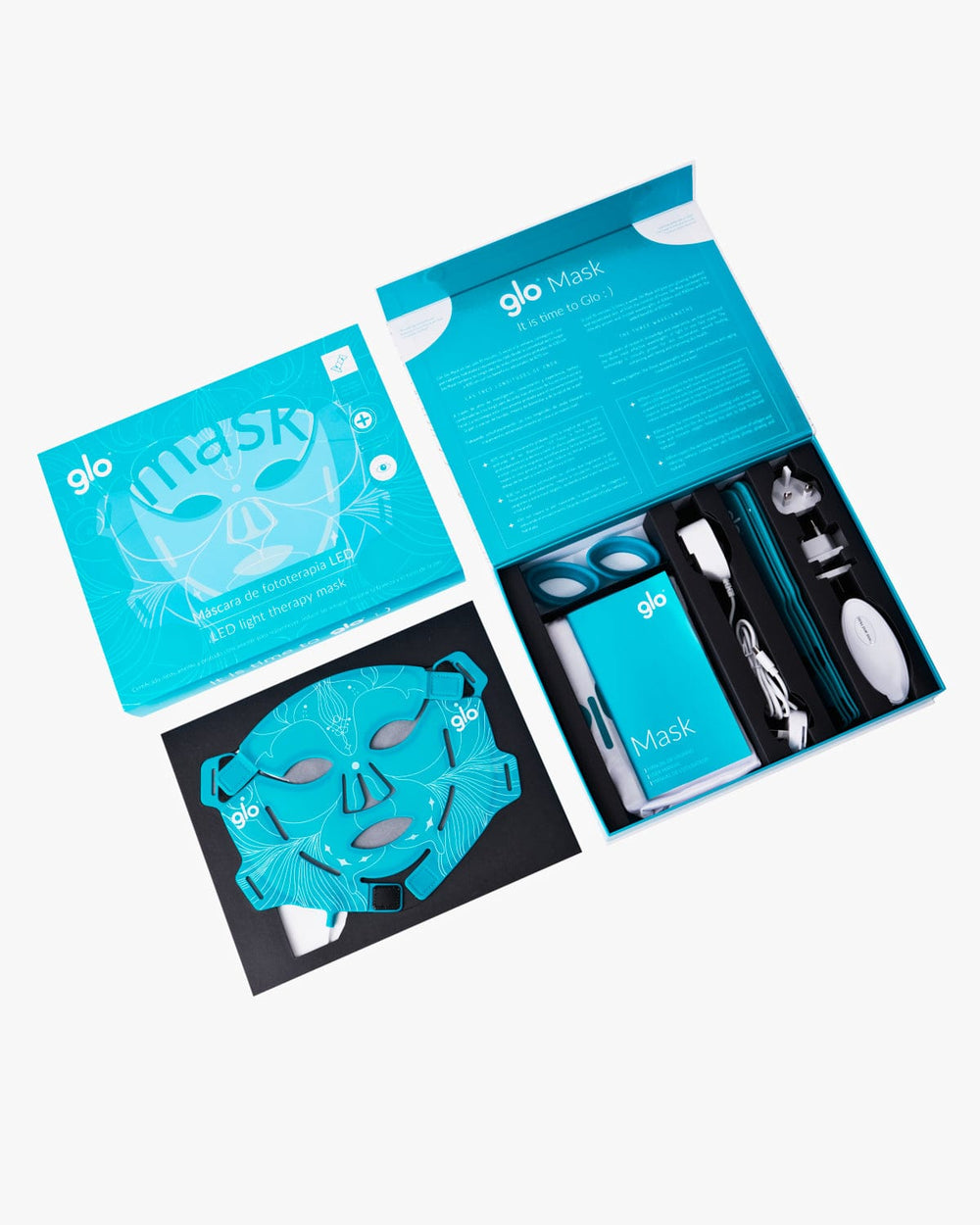
Box contents:
- Portable flexible silicone LED facial mask
- Controller (with lithium battery)
- Country-specific plugs
- Adjustable head straps (4)
- Storage bag
- User manual
- Eye protection (The use of these protectors is optional, as this mask meets all relevant eye safety standards.)
Medical warnings
Glo Mask is a medical device certified in Europe and the United States (FDA) that uses phototherapy technology for skin rejuvenation. Phototherapy is a tested and safe technology, but there are some cases of light sensitivity to consider before using this technology for skin care.
CONTRAINDICATIONS
- DO NOT share Glo Mask with any other person. Glo Mask is for individual use only.
- DO NOT use Glo Mask to treat any condition other than those listed in the directions for use. Glo Mask has not been tested for conditions other than those listed and the risk is unknown.
- DO NOT use Glo Mask if you are pregnant, plan to become pregnant or are breastfeeding. Glo Mask has NOT been tested on pregnant or nursing women, so the risk to the fetus, newborn or pregnant woman is unknown.
- DO NOT use Glo Mask if you suffer from light-induced headaches.
- DO NOT use Glo Mask if you are allergic to silicone. The treatment surfaces of Glo Mask contain medical silicone.
- DO NOT use Glo Mask if you have a genetic eye disease. If you are unsure if you have an eye condition related to the use of Glo Mask, contact a healthcare professional.
- DO NOT use Glo Mask if you have lupus erythematosus, photosensitive eczema or albinism. Using Glo Mask to treat lupus erythematosus, photosensitive eczema or albinism may cause a severe skin reaction.
- DO NOT use Glo Mask if you have a photosensitive disorder (light sensitization). If you use Glo Mask and you have a photosensitive disorder, it may cause a severe skin reaction.
- DO NOT use Glo Mask if you are taking any medication that may cause photosensitivity. If you use Glo Mask and are taking any medication that may cause photosensitivity, it may cause a severe skin reaction.
Photosensitivity is a common side effect of various medications.
These include some antibiotics, chemotherapy drugs and diuretics. If you are not sure which medication you are taking, consult your physician.
Other substances not listed above may also cause photosensitivity.
Common examples of these substances are: St. John's wort, coal tar, deodorants, antibacterial soaps, artificial sweeteners, naphthalene (mothballs), petroleum products, brightening agents present in laundry detergents, and cadmium sulfide (a chemical injected into the skin during tattooing).
In some cases, the Glo mask may be unsuitable for an individual. Certain diseases or medications may make a person unsuitable for treatment.
It is not recommended to use LED phototherapy if you are taking medications that cause photosensitivity.
List of drugs that can cause photosensitivity
If you are taking any of the medications listed below, please read the comments section of the table carefully.
Coal tar, Minoxidil (Rogaine).
Type of drug |
Specific group or common name
|
Comments |
|
Anti-arthritic |
Gold 50 or Ridaura |
If yes, treatment cannot be administered. |
|
Anti-arthritic or Immunosuppressant |
Azathioprine (Imuran, Azasan) |
If yes, treatment can be administered as long as medication has not been taken in the last 5 days. |
|
Antiarrhythmics |
Amiodarone (Cordarone, Pacerone), Aratac |
If the answer is YES, the treatment can be administered as long as the drug has not been taken in the last 5 days. |
|
|
Quinidina |
If the answer is YES, and the client is currently taking the medication, it is at the client's discretion whether or not to initiate treatment. There is a 10/100 chance of a mild reaction. If the client has been off the medication for ≥ 5 days, then treatment can be administered. |
|
Antibiotics |
Fluoroquinolones: Ciprofloxacin (Cipro), Levofloxacin (Levaquin), Lomefloxacin (Maxaquin),Norfloxacin (Noroxin), Ofloxacin (Floxin). Tetracyclines: Demeclocycline (Declomycin), Doxycycline (Vibramycin), Minocycline (Minocin), Oxytetracycline (Terramycin) Others: Azithromycin (Zithromax), Capreomycin (Capastat), Ceftazidime (Fortaz), cycloserine (Seromycin), Metronidazole (Flagyl), nalidixic acid (NegGram), pyrazinamide, sulfamethoxazole/trimethoprim (Bactrim). |
If yes, treatment can be administered as long as the drug has not been taken within the last 5 days. |
|
Anti-Carcinogens |
Bexarotene (Targretin), Capecitabine (Xeloda), Dacarbazine (DTIC), Epirubicin (Ellence), Fluorouracil (5-FU), Interferon alfa (Intron A, Alferon-N), Methotrexate (Mexate), Pentostatin (Nipent), Procarbazine (Matulane), Oral tretinoin (Vesanoid), Vinblastine (Velban, Velbe). |
If the answer is YES, and the client is currently taking the medication, it is at the client's discretion whether to initiate treatment. The likelihood of a mild reaction ranges from 1/100 to 5/100. If the client has been off medication for ≥ 5 days, then treatment can be administered. |
|
Anticonvulsants |
Carbamazepine (Tegretol), Felbamate (Felbatol), Gabapentin (Neurontin), Lamotrigine (Lamictal), Oxcarbazepine (Trileptal), Topiramate (Topamax), Valproic Acid (Depakene). |
|
| Antifungals | Flucytosine (Ancobon), Griseofulvin (Fulvicin, Gris-PEG), Terconazole (Terazol), Voriconazole (VFEND). |
|
|
Antihistamines |
|
|
|
Antihypertensives |
Captopril (Capoten), Diltiazem (Cardizem, Tiazac), Enalapril (Vasotec), Nifedipine (Procardia), Sotalol (Betapace) |
If yes, treatment can be administered as long as the drug has not been taken within the last 5 days. |
|
Antimalarials |
Chloroquine (Aralen), Hydroxychloroquine (Plaquenil), Pyrimethamine (Daraprim), Pyrimethamine/Sulfadoxine (Fansidar), Quinine |
If yes, treatment can be administered as long as the drug has not been taken within the last 5 days |
|
Antipsychotics |
Phenothiazines: Chlorpromazine (Thorazine), Fluphenazine (Prolixin), Perphenazine (Trilafon), Prochlorperazine (Compazine), Thioridazine (Mellaril), Trifluoperazine (Stelazine) |
If the answer is YES, and the client is currently taking the medication, it is at your discretion whether to initiate treatment. There is a 2/100 to 3/100 chance of a mild reaction. If the client has been off medication for ≥ 5 days, then treatment can be administered. |
|
Antiretroviral |
Ritonavir (Norvir), Saquinavir (Fortovase, Invirase), Zalcitabine (Hivid) |
f the answer is YES, and the client is currently taking the medication, it is at the client's discretion whether or not to initiate treatment. There is approximately a 2/100 chance of a mild reaction. If the client has stopped taking the medication for ≥ 5 days, then treatment can be administered. |
|
Antiviral |
Amantadina (Symmetrel), Aciclovir (Zovirax) |
If the answer is YES, and the client is currently taking the medication, it is at the client's discretion whether or not to initiate treatment. There is approximately a 1/100 chance of a mild reaction. If the client has stopped taking the medication for ≥ 5 days, then treatment can be administered. |
|
Cardiovascular |
Thiazid diuretics: Bendroflumethiazide (Corzide), Chlorthalidone (Thalitone), Hydrochlorothiazide (Microzide), Hydroflumethiazide (Diucardin), Indapamide (Lozol), Methiothiazide (Enduron), Metolazone (Zaroxolyn), Polythiazide (Renese). Diuretics, Others: Furosemide (Lasix), Triamterene (Dyrenium). |
|
|
Lipid regulators Others |
Fenofibrate (Tricor) |
If the answer is YES, and the client is currently taking the medication, it is at the client's discretion whether or not to initiate treatment. There is a 10/100 chance of a mild reaction. If the client has stopped taking the medication for ≥ 5 days, treatment can be administered. |
|
Nonsteroidal anti-inflammatory drugs (NSAIDs) Analgesics |
Diclofenac (Voltaren, Cataflam), Naproxen (Anaprox) |
If the answer is YES, and the client is currently taking the medication, it is at the client's discretion whether or not to initiate treatment. There is a <1/100 chance of a mild reaction. If the client has stopped taking the medication for ≥ 1 day, then treatment can be administered. |
|
Sedatives |
|
If the answer is YES, and the client is currently taking the medication, it is at the client's discretion whether to initiate treatment. There is a 1/100 chance of a mild reaction. If the client has stopped taking the medication for ≥ 5 days, then treatment can be administered. |
|
Cutaneous agents (acne). |
Isotretinoin (Accutane, Roaccutane) Topical tretinoin (Renova, Retin-A) Tazarotene (Tazorac) |
If the answer is YES, and the client is currently taking the medication, it is at the client's discretion whether or not to initiate treatment. There is a 5/100 to 10/100 chance of a mild reaction. If the client has been off the medication for ≥ 5 days, then treatment can be administered. |
|
Cutaneous agents (hair). |
Coal tar, Minoxidil (Rogaine). |
If the answer is YES, and the client is currently taking the medication, it is at the client's discretion whether or not to initiate treatment. There is a <0.5/100 chance of a mild reaction. If the client has stopped taking the medication for ≥ 5 days, treatment can be administered. |
Hablan de nosotros





